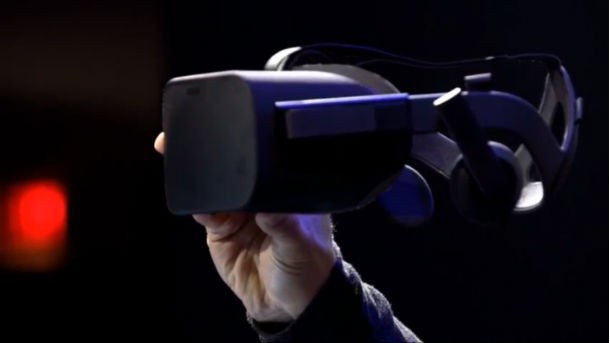Oculus CEO More Fully Explains Pricing, Talks Rift Life Cycle

At E3, we had a chance to catch up with Oculus CEO Brendan Iribe to discuss what it’s going to take to bring the first consumer Rift home. Iribe had previously been quoted as saying that consumers can expect to spend about $1,500 for a PC and the Rift kit. We asked him some more specifics about how the company arrived at that number.
“That’s the general range. I want to see, and hope to see, full package Rift plus PC for even less, for down to $1,300 or $1,200.,” Iribe says. “The $1,500 statement was around what people can expect to spend for a full package at retail. You’ll buy parts a lot cheaper. If you do it yourself and you’re putting together your own PC, you’ll be able to do it for a lot less than $1,500. This is something we’re really pushing on our retail partners and our OEM PC partners, we’re going to be out there heavily promoting it at $1,500 or less for the full package. Rift is only a small fraction of that. Most of that cost is the PC.”
Since Iribe mentioned that the company is in communication with PC makers, we inquired about a licensing or certification program. With so many manufacturers out there, less educated PC consumers will likely benefit from some kind of guidepost about which systems will work with the Rift.
“It definitely makes a lot of sense to have partners that we’re certifying and we pre-test and approve,” Iribe tells me. “We’ve been engaging with a lot of the different PC makers out there to get them Rift kits so they can go and start testing. We’re working with them on what kind of benchmarks we need to give them that they can run to make sure their PC is Rift-compatible. We really want to make it as easy as possible for consumers to know that if they buy a PC, it’s guaranteed to work. Ultimately, that’s up to the PC makers.”

Oculus CEO Brendan Iribe
For those that don’t want to jump aboard right at the start, the wait for the next version of the hardware won’t be a full console cycle away. It will likely come much more quickly, though not as rapidly as some other consumer tech categories.
“This isn’t going to be the console five, six, seven year life cycle. VR is going to move too fast. It’s going to innovate and evolve really rapidly,” Iribe says. “We’ve already seen with the Rift from inception to shipping a product, we’ll have gone through two developer kits, many prototypes leading to a consumer Rift at high quality. We’re going to come out with another prototype some amount of time after we ship the Rift, and then we’re going to come out with another consumer product. We want to move quickly here, but we also want to give developers time to create content and ship against an install base. If we move too quickly, we need to always ensure absolute backward compatibility, so that everybody’s content works on the next generation as we’re updating.”
There’s no set schedule in place at this point. Iribe says that Rift version two won’t be locked in until the company better understands what major new features will be integrated.
“There’s that happy medium between the console life cycle, which is far too long, and the smart-phone cycle, which is every six months or so. That’s a little too short for where VR is going to begin. It’s somewhere in between,” he explains. “We’re still trying to figure when our version two would come together and what features will land in it. If there’s a feature that would take an extra three to five months, we might push out the schedule if it’s that compelling of a feature. It’s too early to tell now. At this point, it’s all sights focused on shipping Rift and Touch.”
Oculus’ first consumer Rift virtual reality display will be out in the first quarter of 2016. The Oculus Touch controllers will be made available shortly thereafter, some time in the first half of 2016.

Get the Game Informer Print Edition!
Explore your favorite games in premium print format, delivered to your door.
- 10 issues per year
- Only $4.80 per issue
- Full digital magazine archive access
- Since 1991









